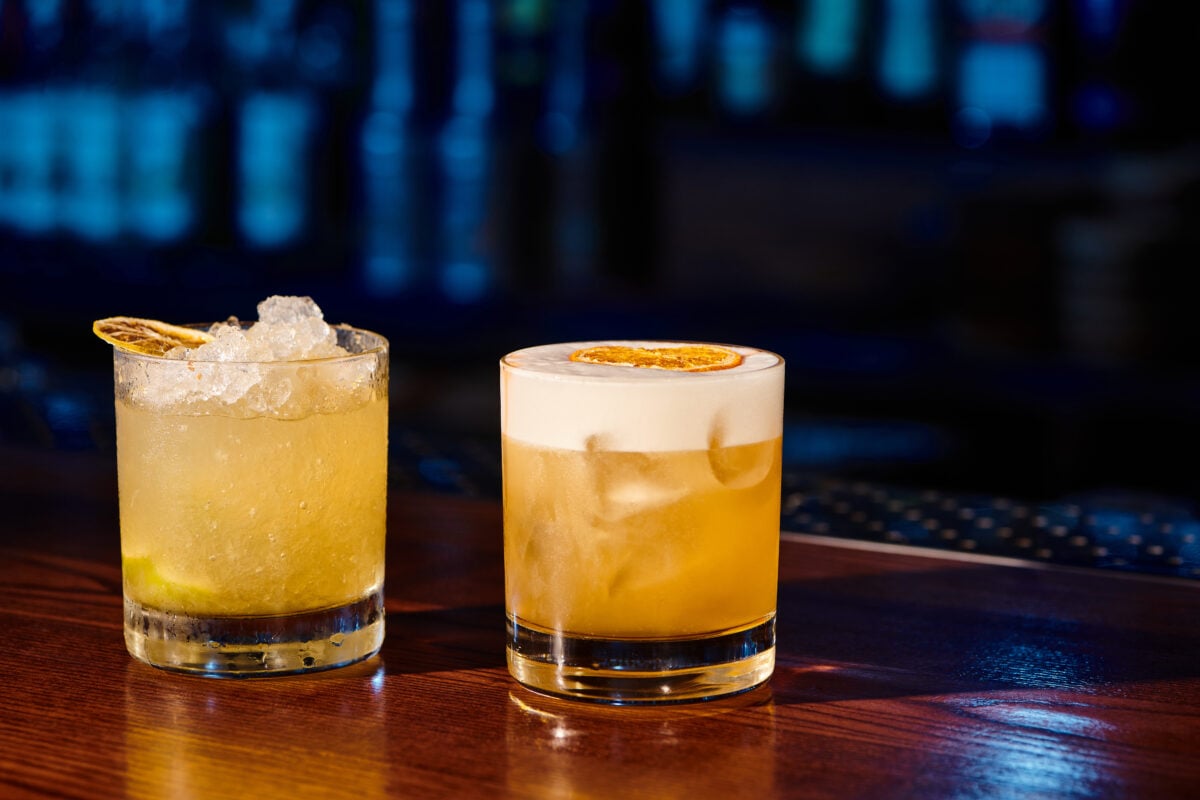Finding a foolproof egg replacement for vegan baking can feel like a long road of trial and error. Flax and chia seeds work in some recipes but can be unpredictable. Mashed bananas and potatoes can add too much density or moisture. But for Jeremy Lalonde, the creator of the YouTube channel PB with J, there’s one solution that works almost every time: aquafaba.
Jeremy LaLonde, a Toronto filmmaker who reinvented himself into an amateur plant‑based chef, founded PB with J to share plant‑based recipes that are simple, fun, and anchored in whole foods. In his recent video, he dives into aquafaba, the often overlooked chickpea water he affectionately dubs “liquid gold,” and walks you through every trick in the book, from science to sweet treats.
Read more: Turn One Can Of Chickpeas Into 3 High-Fiber Vegan Dishes
What is aquafaba?
Aquafaba, Lalonde explains, comes from the Latin words aqua (water) and faba (bean). It’s simply the viscous liquid from cooked chickpeas, and despite sounding unappetizing, it has properties that mimic eggs and oil. Made popular in 2014 by French chef Joël Roessel, it has become a staple for vegan cooks.
Chemically, aquafaba contains proteins, starches, and soluble plant solids. These allow it to act as an emulsifier, foaming agent, and binder. “When you whip aquafaba, the proteins and starches create a foam that is remarkably similar to whipped egg whites,” Lalonde says. This makes it ideal for meringues, whipped cream, and macarons – all without animal products.
Lalonde points out that replacing eggs and oil with aquafaba has a “whack of health benefits,” such as reduced fat and calories, since aquafaba is virtually fat-free. It also contains small amounts of protein and fiber from chickpeas, and in baking, it creates a lighter, airier texture without greasiness.
How to make aquafaba at home
The easiest way to get aquafaba, Lalonde explains, is to save the liquid from a can of chickpeas – provided there are no added ingredients. For those who prefer homemade, Lalonde shares both Instant Pot and stovetop methods.
For the Instant Pot: soak two cups of chickpeas overnight, drain, add six cups of fresh water, and cook for 20 minutes. Allow a natural release, cool, refrigerate for a few hours, then strain. Without soaking, use 7½ cups of water and cook for 46 minutes before following the same cooling and straining steps.
For the stovetop: soaking is essential. Drain the soak water, add eight cups of fresh water, bring to a boil, then simmer for 65 to 75 minutes. Cool, refrigerate, then strain. Aquafaba lasts a week in the fridge or can be frozen.
Replacing eggs and oil in baking
The basic rule: three tablespoons of aquafaba equals one egg. This works for cakes, cookies, brownies, and most baked goods. For meringues, Lalonde uses ¾ cup of aquafaba with one teaspoon of cream of tartar, whipping until foamy before adding sweetener gradually and mixing to stiff peaks. “The beauty of this, unlike egg whites, is you can’t overmix them,” he says.
Aquafaba can replace oil in a one-to-one ratio in baked goods, giving moisture and tenderness without added fat. Lalonde recommends it in cakes, muffins, brownies, and cookies.
Beyond baking

Aquafaba’s talents extend far past cupcakes and brownies. Lalonde says it’s “perfect for making like a mayonnaise or an aioli or a dressing” thanks to its emulsifying power. For a quick vegan mayo, he mixes “aquafaba with mustard, vinegar and salt and then just whip it till it’s creamy,” tasting and adjusting until the flavor is right.
It’s also a handy substitute for an egg wash on baked goods. “You can literally swap it out just like you would with an egg wash,” Lalonde says. “Just dip a little silicone brush… and spread it all around. I’ve done that a lot for scones and pies, it’s beautiful.”
For cocktails, aquafaba can create that signature foam on drinks like a whiskey sour. “Yes, for those that are asking, you can use aquafaba the same way you would use egg whites in alcoholic drinks… awesome, right?”
In savory cooking, Lalonde recommends it for roasting and sautéing vegetables. “I just toss mine in a little bit of aquafaba… it does the same thing of browning them and giving them that little goldenness that putting oil on does,” he says. It also helps seasoning cling to the vegetables, from potatoes to Brussels sprouts.
Even dressings benefit from the switch. “Take any dressing recipe you have that uses oil in it and just replace it with an equivalent amount of aquafaba,” he explains. “You will get a beautiful light and airy and creamy texture without all of that extra fat.”
Find more healthy plant-based recipes on Lalonde’s Pb with J YouTube channel or his website.
Read more: 11 Vegan Dinners Where Chickpeas Are The Star Of The Show






